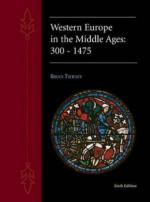|
This section contains 3,055 words (approx. 11 pages at 300 words per page) |

|
Emerging Stability. In Europe several centuries of unsettled conditions and regress followed closely upon the collapse of the Roman Imperial civilization (476) in the Mediterranean basin. The so-called Dark Ages (500-850) were a time of tribal migrations into central and western Europe. Over the course of the ensuing period between 814 and 1350, no one social class system or economic form developed that could be used to describe Europe as a whole. Despite the perspective of Adam Smith and others of the eighteenth century who saw in "the disorders" of the medieval period obstacles to progress toward national prosperity, the Middle Ages as a whole laid the foundation for the rise of Europe to its later economic predominance in the world. Admittedly, since the economy of medieval Europe did not become fully urban, its actual progress was slow, but some major transformations were taking place with the shift in European economic...
|
This section contains 3,055 words (approx. 11 pages at 300 words per page) |

|



